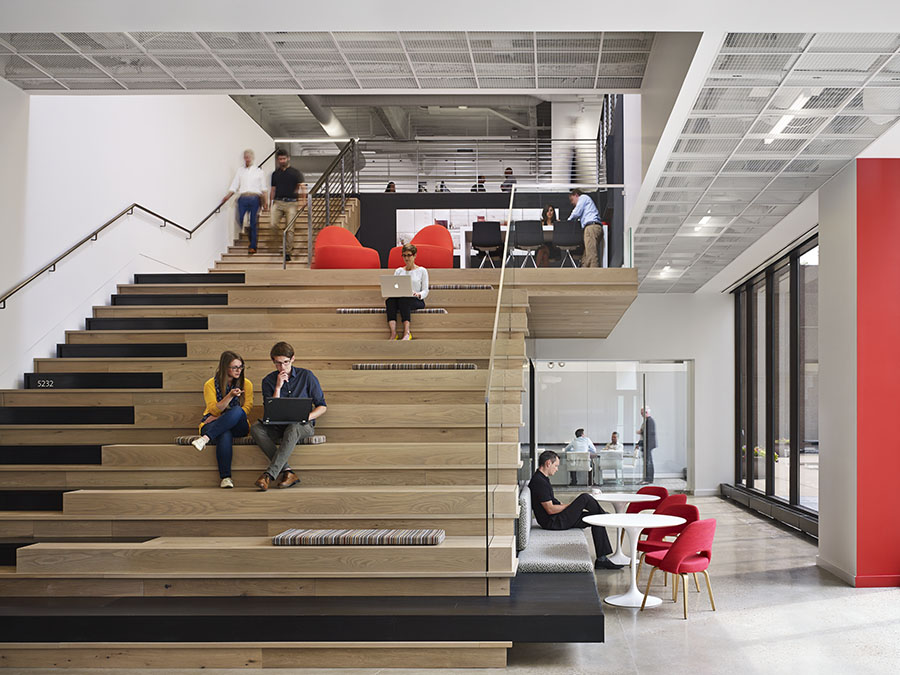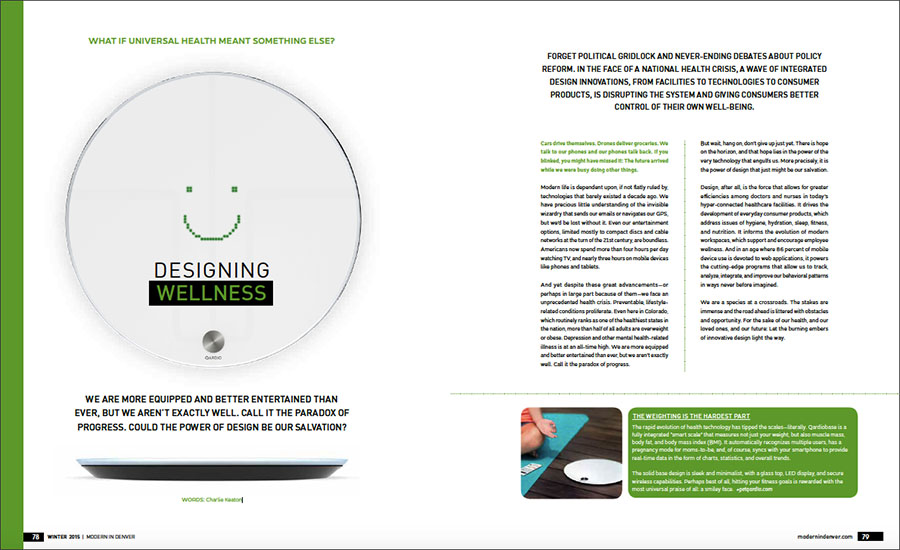The average American works 47 hours per week, highest in the industrialized world, while also taking fewer vacation days and retiring later in life. Which means that when it comes to maintaining proper physical and mental wellbeing, getting to the gym a few days per week isn’t nearly enough. More and more, employers recognize the need for workspaces that promote health and wellness among their workers. But what does that look like, exactly?
Gensler Office Photo by Ryan Gobuty
Not long ago, the answer was often as reductive as buying ergonomic keyboards in bulk, but we’ve come a long way in recent years. Policy is one easy way to affect change. Denver-based tech firm Full Contact has a policy called Paid, Paid Vacation, which provides each employee $7,500 per year to spend on a vacation, during which time they are strictly forbidden from working or even checking email. Programs are another effective tactic: fitness challenges, recipe exchanges, yoga classes, and smoking cessation programs are among the more popular offerings.
But programs and policies are only part of the equation. In order to maximize employee wellness, the workplace itself has to be reimagined. As Design Director for Gensler, Michelle Liebling has seen a dramatic shift in how her clients approach the issue of employee wellness. “A lot of our clients are looking to the notion of the workplace being a tool to make happy, healthy, engaged workers by understanding who they are and creating a space that authentically speaks to that.” Liebling points to subtle nudges, rather than heavy-handed mandates, as a big factor in driving change. One client added standing tables without chairs to reduce the amount of sitting (and with the added benefit of shorter meetings). Another focused on biomimicry, bringing naturally occurring textures and shapes, like Fibonacci spirals, into the office environment. Others have implemented hydration stations every few feet.
When Liebling and her Gensler colleagues began work on their new downtown headquarters, they made nudges of their own. They created a wide variety of breakout spaces throughout, putting their employees on laptops and encouraging them to move around and find new perspectives. They added sensors to their lighting system, casting a warm and comfortable glow at 3,500 Kelvin, which automatically dims on a bright day. They focused on acoustics as a way of minimizing noisy distractions, lining the walls with fabric-wrapped, tackable fabric. And they put the elevator around the corner and out of sight while making the stairs the building’s undisputed focal point.
For their trouble, Gensler garnered awards from both AIA and IIDA for their new office, but the real reward has been the anecdotal response from employees, who report better overall health and engagement since the move. Liebling attributes this to an employee centric approach, and she believes the biggest shifts in workplace design in the coming years will stem from wider acceptance of similar practices. “It’s old news to talk about generations in the workplace, but it’s not old news to talk about work styles in the workplace. An introvert is different than an extrovert, and what does that mean for them in an office environment? That will continue to be more on the forefront and companies will be more interested in designing a space that fits their people, as opposed to their people fitting into a space.”
DIVE INTO OUR COMPREHENSIVE DESIGNING WELLNESS SERIES:












